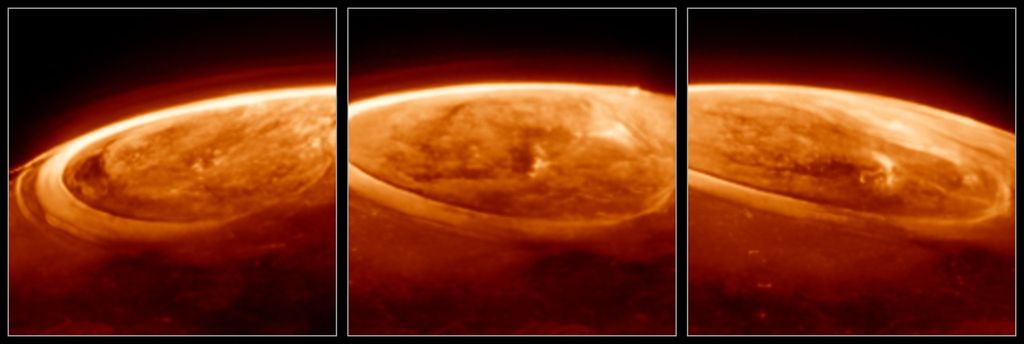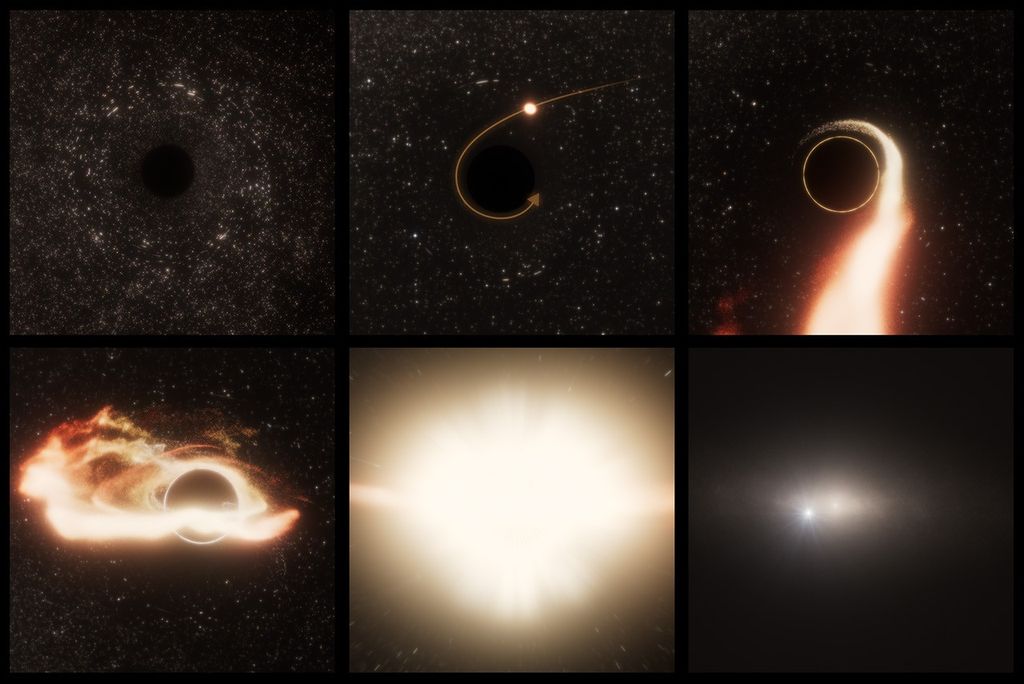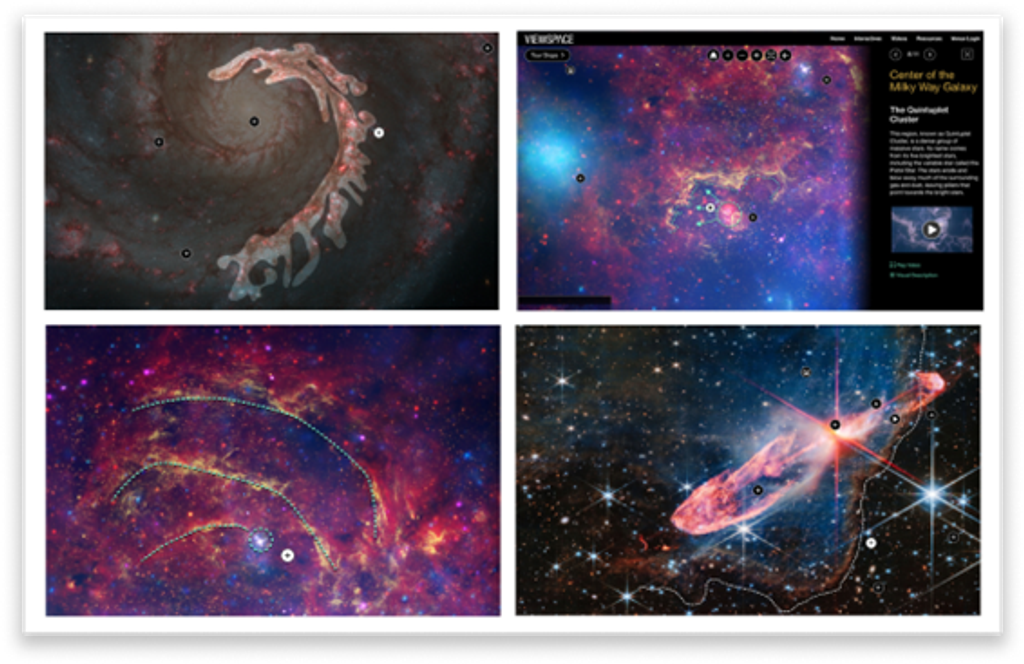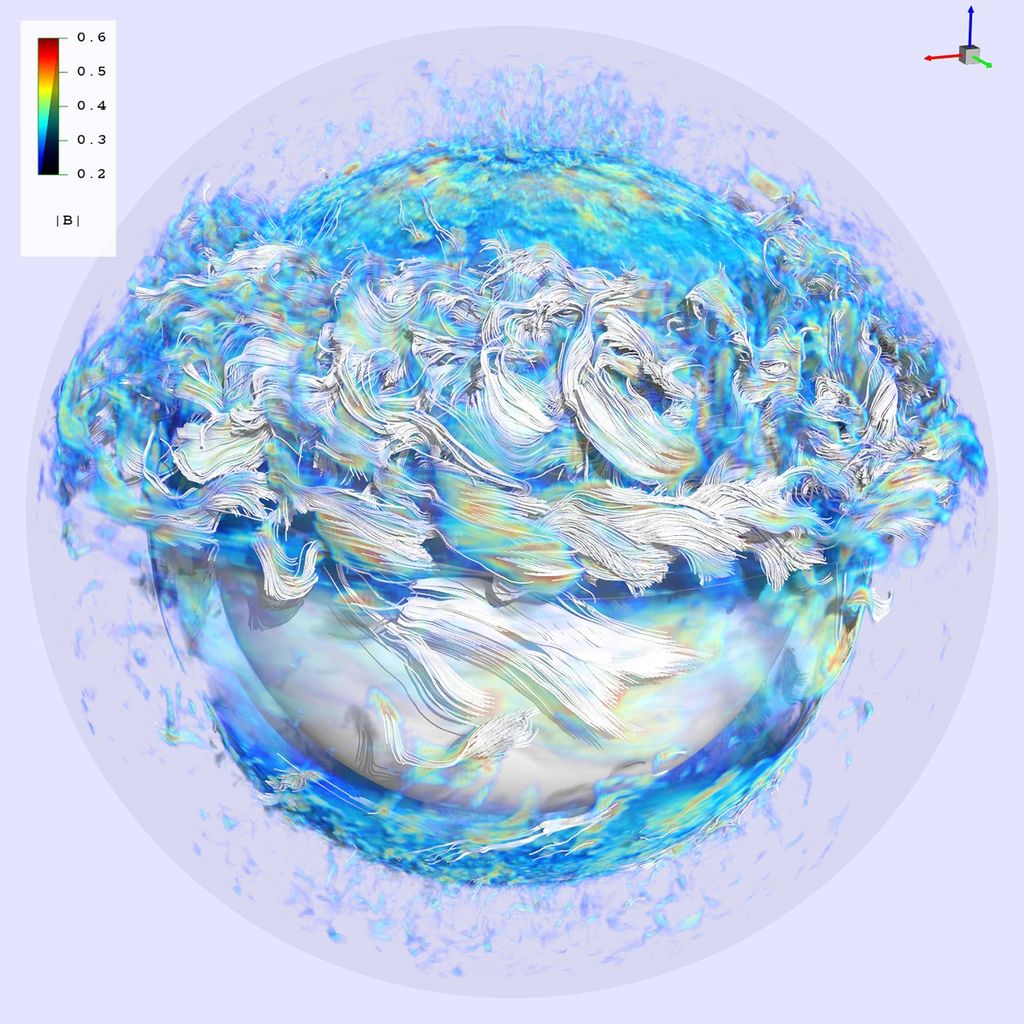The Next Full Moon is a Blue Moon, the Flower Moon, the Corn Planting Moon, the Milk Moon and Buddha Purnima.

The Next Full Moon is a Blue Moon, the Flower Moon, the Corn Planting Moon, the Milk Moon and Buddha Purnima.
The next full Moon will be on Saturday afternoon, May 18, 2019, appearing opposite the Sun (in Earth-based longitude) at 5:11 PM EDT. The Moon will appear full for about three days around this time, from Friday evening through Monday morning, making this a full Moon weekend.
As the third full Moon in a season that has four full Moons, this will be a Blue Moon by the older definition. The Moon will not actually appear blue in color. The first recorded use of the term in English dates from 1528. Speculations on the origin of the term include an old English phrase that means "betrayer Moon" or a reference to rare events, such as when dust in the atmosphere makes the Moon actually appear blue. Since the 1940's the term "Blue Moon" has also been used for the second full Moon in a month that has two full Moons.
The Maine Farmer's Almanac first published "Indian" names for the full Moons in the 1930's. According to this almanac, the Native American tribes of the northeastern United States called this the Flower Moon, as flowers are abundant this time of year in most of these areas. Other names include the Corn Planting Moon or the Milk Moon. Some writers tie these Native American names to the months of our modern calendar, but I think it more likely these names were tied to the seasons. For the past year the full Moon names by season and by month have been out of sync, but this spring's "extra" Moon brings them back into sync again.
As usual, the wearing of suitably celebratory celestial attire is encouraged in honor of the full Moon.
This full Moon corresponds to Vesak, also known as Buddha Purnima, a holiday (according to Wikipedia) "observed traditionally by Buddhists in Nepal, Sri Lanka, Tibet, Bangladesh, Bhutan, India and the South East Asian countries of Singapore, Vietnam, Thailand, Cambodia, Laos, Malaysia, Myanmar, the Philippines, and Indonesia. Sometimes informally called "Buddha's Birthday", it actually commemorates the birth, enlightenment (nirvāna), and death (Parinirvāna) of Gautama Buddha." The actual date of Vesak varies depending upon the lunar calendar in use in the particular country or region, but this year for most areas it falls on or near the day of this full Moon. For more information see for example: https://en.wikipedia.org/wiki/Vesak
In lunisolar calendars the months change with the new Moon and full Moons fall in the middle of the lunar months. This full Moon is the middle of the fourth month of the Chinese calendar and Iyar in the Hebrew calendar. In the Islamic calendar the months start with the first sighting of the waxing crescent Moon a few days after the New Moon. This full Moon is near the middle of the holy month of Ramadan, the month in which the Quran was revealed. Observing this annual month of charitable acts, prayer, and fasting from dawn to sunset is one of the Five Pillars of Islam.
As usual, the wearing of suitably celebratory celestial attire is encouraged in honor of the full Moon.
As for other celestial events between now and the full Moon after next:
Longer Days Ahead
As spring continues, the daily periods of sunlight continue to lengthen. On the day of the full Moon, for the Washington, DC area, Saturday, May 18, 2019, morning twilight will begin at 4:46 AM, sunrise will be at 5:53 AM, the Sun will reach a maximum altitude of 70.7 degrees at 1:05 PM, sunset will be at 8:16 PM, and evening twilight will end at 9:24 PM EDT. Our 24-hour clock is based on the average length of the solar day throughout the year but the actual length of a solar day varies. Because of this, the earliest sunrises of the year occur before the summer solstice, the day with the longest period of sunlight, and the latest sunsets of the year occur after the solstice. For the DC area, the earliest sunrises of the year occur on June 13 and 14, 2019 (at 5:42:11 AM EDT). By the day of the full Moon after next, Monday, June 17, 2019, morning twilight will begin at 4:30 AM, sunrise will be at 5:42 AM, the Sun will reach a maximum altitude of 74.5 degrees at 1:09 PM, sunset will be at 8:36 PM, and evening twilight will end at 9:48 PM EDT.
Jupiter, Mercury and Mars in the Sky
On the evening of the full Moon on May 18, 2019, as evening twilight ends, the bright stars of the local arm of our galaxy will have already set, including all but a few stars of the constellation Orion. The planet Mars will appear in the west-northwest at about 16 degrees above the horizon. The Big Dipper will appear just a little north of overhead. Towards the end of May, the planet Jupiter will begin rising in the east-southeast around the time evening twilight ends and the planet Mercury will begin emerging from the glow of the setting Sun, appearing above the horizon at the time evening twilight ends on June 2, 2019 (for the Washington, DC area). Mars will continue to shift gradually towards the west-northwest, moving towards Mercury. By the night of the full Moon on June 17, 2019, as evening twilight ends, Mercury and Mars will appear about a degree apart in the west-northwest at about 5 degrees above the horizon. Mercury will appear brighter than Mars, with Mercury on the right and Mars on the left. They will appear at their closest the evening after the full Moon after next, on June 18, 2019.
On the morning of the full Moon on May 18, 2019, as morning twilight begins, the bright planet Jupiter will appear in the south-southwest about 23 degrees above the horizon and the planet Saturn will appear in the south about 30 degrees above the horizon. The "Summer Triangle" will appear directly overhead. The "Summer Triangle" is not a constellation, but is made up of Vega, the brightest star in the constellation Lyra the Harp; Deneb, the brightest star in the constellation Cygnus the Swan; and Altair, the brightest star in the constellation Aquila the Eagle. Even brighter than Jupiter, the planet Venus will be rising about 7 minutes after morning twilight begins and should be visible low in the east-northeast until about 30 minutes before sunrise. By the morning of the full Moon on June 17, 2019, Jupiter will appear in the southwest about 8 degrees above the horizon and Saturn will appear in the south-southwest at about 25 degrees above the horizon. Venus will rise in the east-northeast about 14 minutes after morning twilight begins. The bright star appearing nearly overhead will be Deneb.
The Moons of Jupiter
We are entering a season that should be a good time for using a backyard telescope to view the planet Jupiter and its four bright Moons. Jupiter will be at opposition, or opposite the Sun as seen from the Earth (effectively a "full Jupiter") on June 10, 2019, appearing at its closest and brightest for the year, rising around sunset and setting around sunrise. With a small telescope you should be able to see Jupiter's four bright moons, Ganymede, Callisto, Europa, and Io, shifting positions noticeably in the course of an evening. Galileo was the first person known to point the newly developed telescope at Jupiter, and he immediately noticed these moons that we now call the Galilean moons.
For navigation, especially at sea (where there are no reference points), accurate determination of longitude depends upon an accurate measurement of time. Before the development of accurate clocks in the late 1700’s, navigators considered using the moons of Jupiter as a natural clock. It was Galileo who first proposed this. See for example: http://www.oceannavigator.com/May-June-2004/Longitude-by-Jove-navigating-with-Jupiters-moons/
At first the predictions of where the moons of Jupiter should be were off slightly, until people realized that it took time for light to get from Jupiter to Earth and that this varied as the distance from Jupiter to Earth varied. This led to one of the earliest, relatively accurate estimates of the speed of light, see for example: https://en.wikipedia.org/wiki/Speed_of_light
This estimate of the speed of light got better after world-wide observations of the transits of Venus in 1761 and 1769 allowed astronomers to make the first accurate measurement of the distance from the Earth to the Sun, and from this, improve our knowledge of the size of the Solar System and how the distance from Jupiter to the Earth changes over time. One of the reasons Captain Cook sailed to Tahiti was to observe the 1769 transit. The place on the north end of the island where he and Charles Green observed the Transit of Venus is called Pointe Venus.
Observing the moons of Jupiter from the rocking deck of a moving ship was difficult, so using the moons of Jupiter as a time reference never really worked well for navigation at sea. Captain Cook, during one of his around-the-world voyages, observed Jupiter when on land to update his clocks and accurately locate the places he visited.
Near-Earth Asteroids
Even though they are not visible usually, I include in these Moon missives information about Near Earth Objects (mostly asteroids) that pass the Earth within about 15 lunar distances, because I find it interesting that we have discovered so many. On Wednesday evening, May 15, 2019, at 8:05 PM EDT (2019-May-16 00:05 UTC), Near Earth Object (2019 JN5), between 20 and 45 meters (66 to 148 feet) in size, will pass the Earth at between 4.4 and 4.5 lunar distances (nominally 4.4), traveling at 13.08 kilometers per second (29,266 miles per hour).
On Thursday evening, May 16, 2019, at 9:55 PM EDT (2019-May-17 01:55 UTC), Near Earth Object (2019 JG1), between 12 and 27 meters (40 to 89 feet) in size, will pass the Earth at between 5.5 and 5.6 lunar distances (nominally 5.6), traveling at 8.08 kilometers per second (18,069 miles per hour).
On Friday morning, May 17, 2019, at 10:41 AM EDT (2019-May-17 14:41 UTC), Near Earth Object (2012 KT12), between 15 and 33 meters (48 to 107 feet) in size, will pass the Earth at 4.1 lunar distances, traveling at 4.00 kilometers per second (8,945 miles per hour).
On Friday evening, May 17, 2019, at 7:38 PM EDT (2019-May-17 23:38 UTC), Near Earth Object (2019 GT1), between 27 and 59 meters (87 to 195 feet) in size, will pass the Earth at 6.1 lunar distances, traveling at 3.95 kilometers per second (8,828 miles per hour).
On Saturday afternoon, May 18, 2019, at 1:46 PM EDT (2019-May-18 17:46 UTC), Near Earth Object (2019 JR1), between 33 and 75 meters (110 to 245 feet) in size, will pass the Earth at between 16.0 and 16.3 lunar distances (nominally 16.1), traveling at 10.04 kilometers per second (22,454 miles per hour).
May Skywatching
As mentioned above, the next full Moon will be on Saturday afternoon, May 18, 2019, at 5:11 PM EDT. As the third full Moon in a season with four full Moons, this will be a Blue Moon.
On Sunday evening, May 19, into Monday morning, May 20, 2019, the bright planet Jupiter will appear near the full Moon. For the Washington, DC area, Jupiter will rise in the east-southeast at around 9:59 PM EDT, appearing below an a little to the left of the full Moon. As the evening progresses, Jupiter will appear to shift closer to the Moon and more to the middle-left. The Moon will reach its highest in the sky at 2:44 AM, and morning twilight will begin around 4:44 AM.
On Sunday night, May 19, 2019, at 11:23 PM EDT (2019-May-20 03:23 UTC), Near Earth Object (2019 JB1), between 176 and 393 meters (576 to 1,288 feet) in size, will pass the Earth at between 16.7 and 16.8 lunar distances (nominally 16.8), traveling at 26.04 kilometers per second (58,245 miles per hour).
On Monday morning, May 20, 2019, at about 3:35 AM EDT (2019-May-20 07:35 UTC with 11 minutes uncertainty), Near Earth Object (2019 JL3), between 28 and 62 meters (91 to 204 feet) in size, will pass the Earth at 2.5 lunar distances, traveling at 8.79 kilometers per second (19,663 miles per hour).
On Monday evening, May 20, into Tuesday morning, May 21, the bright planet Jupiter will appear to the right of the waning gibbous Moon. For the Washington, DC area, Jupiter will appear to the upper right of the Moon when it rises in the east-southeast at around 10:17 PM EDT, and they will appear to move apart as the night progresses. The Moon will reach its highest in the sky Tuesday morning at 3:12 AM, and morning twilight will begin at 4:43 AM.
Tuesday, May 21, 2019, at around 9 AM EDT, will be when the planet Mercury passes on the far side of the Sun as seen from Earth, called superior conjunction.
On Thursday morning, May 23, 2019, the planet Saturn will appear to the right of the waning gibbous Moon. For the Washington, DC area, when the Moon rises in the east-southeast just after midnight, at 12:02 AM EDT, Saturn will appear to the upper right of the Moon. Saturn will appear to move away to the right as the morning progresses, with morning twilight starting at 4:41 AM.
On Saturday morning, May 25, 2019, at about 10:23 AM EDT (2019-May-25 14:23 UTC with 27 minutes uncertainty), Near Earth Object (2015 KQ18), between 22 and 49 meters (73 to 162 feet) in size, will pass the Earth at between 10.2 and 11.2 lunar distances (nominally 10.7), traveling at 13.07 kilometers per second (29,226 miles per hour).
On Saturday evening, May 25, 2019, at 7:05 PM EDT (2019-May-25 23:05 UTC), Near Earth Object 66391 (1999 KW4), about 1.5km by 1.5km by 1.3km (1.0 mi. by 0.9 mi. by 0.8 mi.) in size, will pass the Earth at 13.5 lunar distances, traveling at 21.51 kilometers per second (48,123 miles per hour).
Sunday morning, May 26, 2019, at 9:27 AM EDT, the Moon will be at apogee, its farthest from the Earth for this orbit.
Sunday, May 26, 2019, the waning Moon will appear half-full as it reaches its last quarter at 12:33 PM EDT.
On Tuesday morning, May 28, 2019, at about 7:19 AM EDT (2019-May-28 11:19 UTC with 62 minutes uncertainty), Near Earth Object (2003 LH), between 24 and 54 meters (80 to 178 feet) in size, will pass the Earth at between 14.2 and 17.0 lunar distances (nominally 15.6), traveling at 7.35 kilometers per second (16,451 miles per hour).
On Thursday morning, May 30, 2019, at 6:48 AM EDT (2019-May-30 10:48 UTC), Near Earth Object (2011 HP), between 101 and 226 meters (332 to 741 feet) in size, will pass the Earth at 12.3 lunar distances, traveling at 8.43 kilometers per second (18,864 miles per hour).
June Skywatching
On Saturday morning, June 1, 2019, as the sky lightens with dawn, if you have a clear view to the horizon to the east-northeast, you may be able to see the bright planet Venus to the left of the thin, waning, crescent Moon. For the Washington, DC area, Venus will rise around 4:45 AM EDT, the Moon will rise at 4:48 AM, and they will be about 5 degrees above the horizon at 5:15 AM, 30 minutes before sunrise, which is approximately when the sky will become too bright to see the pair.
Monday morning, June 3, 2019, at 6:02 AM EDT, will be the new Moon, when the Moon passes between the Earth and the Sun and will not be visible from the Earth. The day after the New Moon marks the start of the new month for most lunisolar calendars. Sundown on June 4 marks the start of Sivan in the Hebrew calendar. The fifth month of the Chinese calendar starts on June 3 (at midnight in China's time zone, which is 12 hours ahead of EDT).
Saturday evening, June 4, 2019, if you have a clear view all the way to the horizon to the west-northwest when as the sky is darkening after sunset, you might be able to see the planet Mercury to the right of the thin, waxing, crescent Moon. They will only be about a degree above the horizon when evening twilight ends (at 9:41 PM EDT for the Washington, DC area) and will set within about 10 minutes (but 9:52 PM EDT for the DC area). The planet Mars will appear about 7 degrees above the Moon.
In the Islamic calendar the months start with the first sighting of the waxing crescent Moon a few days after the New Moon. The crescent Moon on Saturday evening, June 4, 2019, will mark the end of Ramadan and the beginning of Shawwāl. One of the Five Pillars of Islam is fasting from dawn to sunset every year during Ramadan, and the end of Ramadan is a significant Islamic holiday called Aid al-Fitr or the Festival of Breaking the Fast.
On Wednesday, June 5, 2019, the waxing crescent Moon, the planet Mars, and the planet Mercury will appear in nearly a straight line in the evening sky after sunset, with the Moon on the upper left, Mars in the middle, and Mercury (appearing brighter than Mars) near the horizon in the lower right. The bright stars appearing above the Moon will be Caster (on the right) and Pollux (on the left), the twins in the constellation Gemini. To see Mercury you will need a clear view of the horizon, as it will only be about 2 degrees above the horizon as evening twilight ends (at 9:42 PM EDT for the Washington, DC area) and will set about 14 minutes later.
On Thursday morning, June 6, 2019, at about 4:11 AM EDT (2019-Jun-06 08:11 UTC with 80 minutes uncertainty), Near Earth Object (2019 JX2), between 35 and 78 meters (115 to 257 feet) in size, will pass the Earth at between 13.4 and 14.0 lunar distances (nominally 13.7), traveling at 6.96 kilometers per second (15,562 miles per hour).
Sometime around Thursday, June 6, 2019 (2019-Jun-06 20:07 UTC with 3 days, 5 hours, 9 minutes uncertainty), Near Earth Object (2014 MF18), between 17 and 38 meters (55 to 123 feet) in size, will pass the Earth at between 8.2 and 9.7 lunar distances (nominally 8.7), traveling at 2.97 kilometers per second (6,652 miles per hour).
Friday evening, June 7, 2019, at 7:21 PM EDT, the Moon will be at perigee, its closest to the Earth for this orbit.
On Saturday evening into Sunday morning, June 8 to 9, 2019, the bright star appearing below the waxing crescent Moon will be Regulus. For the Washington, DC area, evening twilight will end at 9:44 PM, and Regulus will set in the west-northwest early Sunday morning at 12:55 AM EDT.
On Monday morning, June 10, 2019, the Moon will appear half-full as it reaches its first quarter at 1:59 AM EDT.
On Monday, June 10, 2019, the planet Jupiter will be at opposition, or opposite the Sun as seen from the Earth, effectively a "full Jupiter." This will be when Jupiter will be at its closest and appear at its brightest for this apparition, transitioning from the morning sky to the evening sky.
On Wednesday evening, June 12, 2019, the bright star appearing to the lower right of the waxing gibbous Moon will be Spica. For the Washington, DC area, Spica will set Thursday morning around 2:36 AM EDT.
On Saturday night into Sunday morning, June 15 to 16, 2019, the bright planet Jupiter, the bright star Antares, and the waxing, gibbous, almost full Moon will appear as a triangle, with Jupiter on the left, the Moon on the right and Antares below. For the Washington, DC area, they will appear in the southeast as evening twilight ends at 9:48 PM EDT, the Moon will reach its highest in the sky just after midnight at 12:10 AM, and Antares will be setting in the southwest just as morning twilight begins Sunday morning at 4:30 AM.
On Sunday evening into Monday morning, June 16 to 17, 2019, the bright planet Jupiter will appear to the right of the nearly full Moon. They will appear in the southeast as evening twilight ends (at 9:48 PM EDT for the Washington, DC area), the Moon will reach its highest in the sky early Monday morning (at 1:02 PM), and they will appear in the southwest as morning twilight begins (at 4:30 AM).
In the early evenings of the week or so leading up to the full Moon after next, the bright planet Mercury will appear to shift closer and closer to the planet Mars, reaching their closest the evening after the full Moon after next. The bright stars appearing above Mercury and Mars will be Castor and Pollux, the twins in the constellation Gemini. On the evening just before the full Moon after next, June 16, 2019, Mercury and Mars will appear about a degree apart, and will appear even closer the next three evenings, less than 1/3 of a degree apart on June 18, 2019.
The full Moon after next will be on Monday morning, June 17, 2019, at 4:31 AM EDT.






























